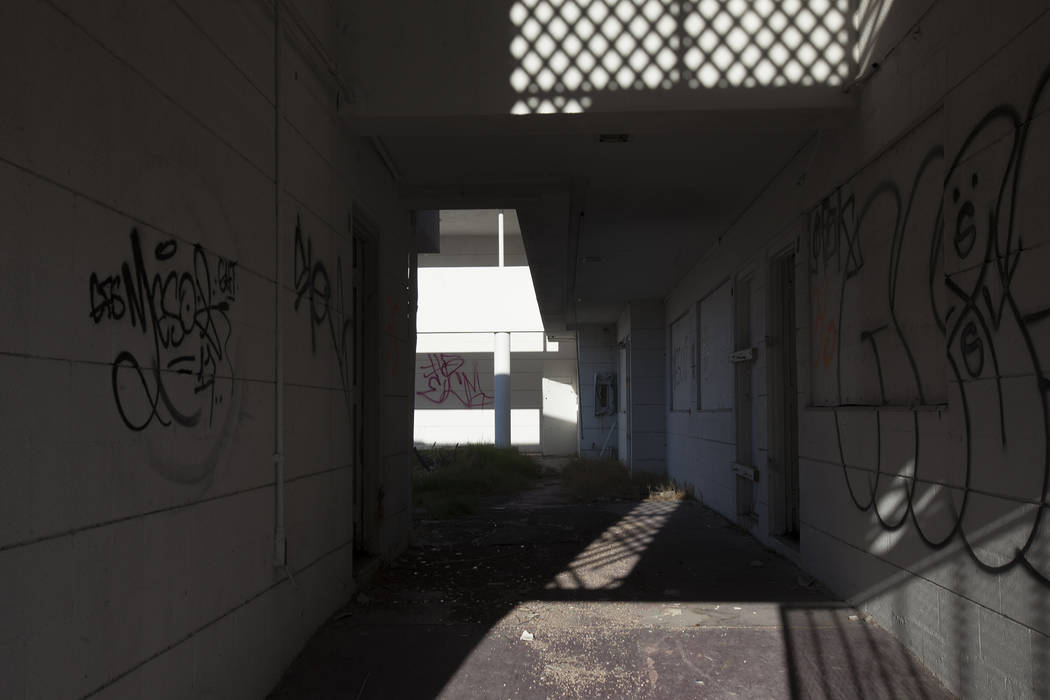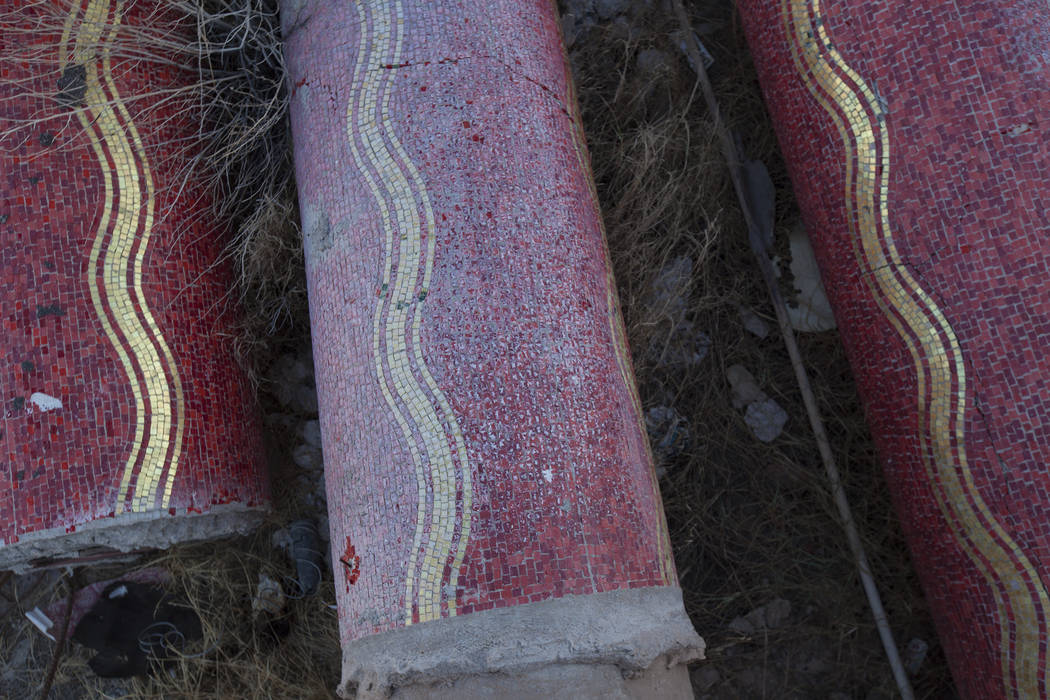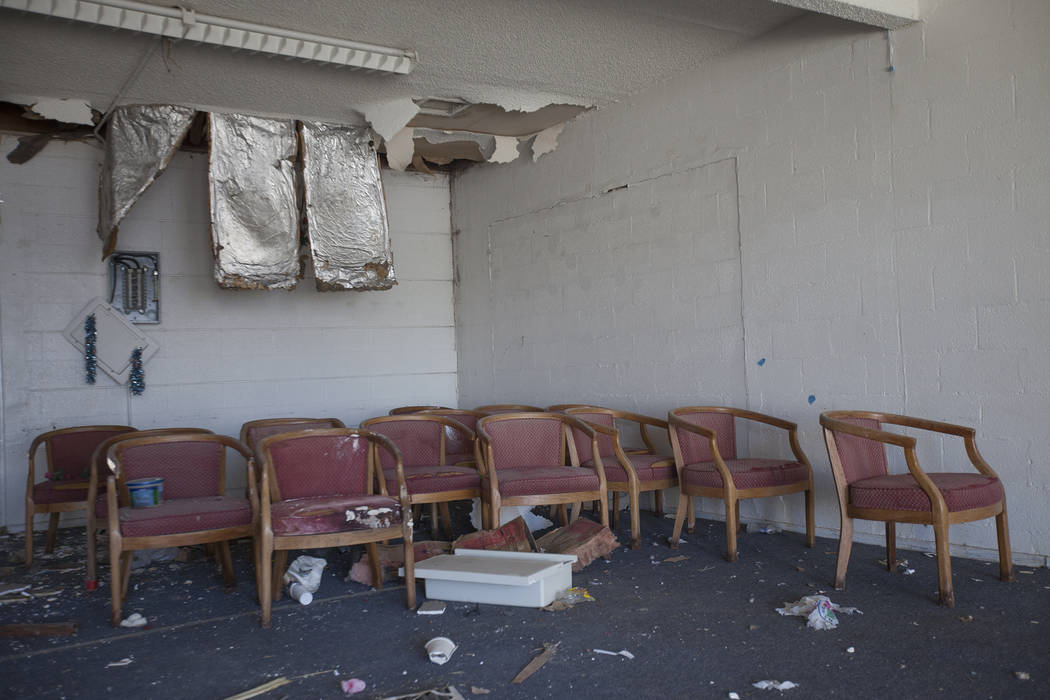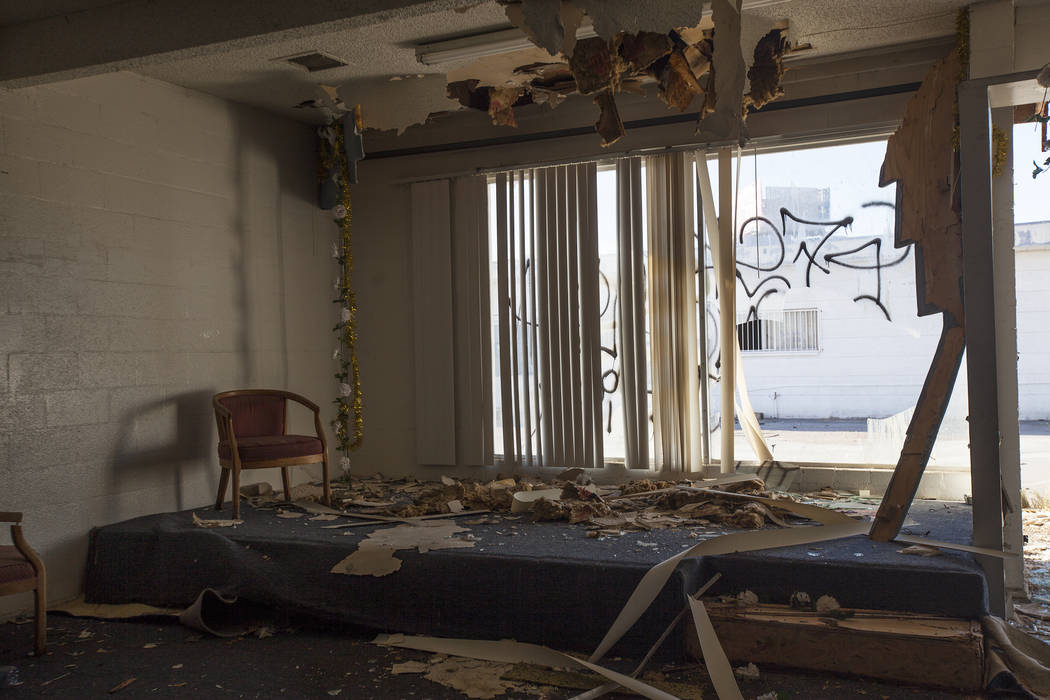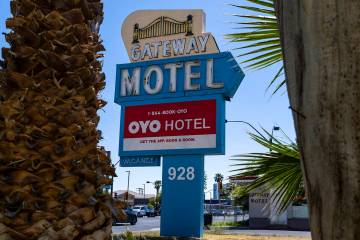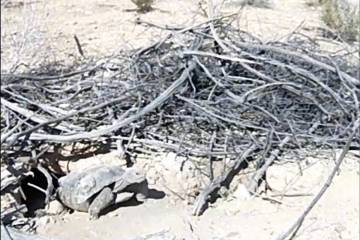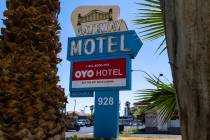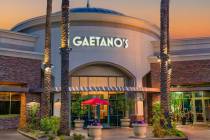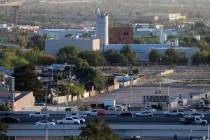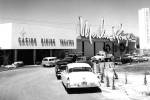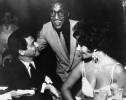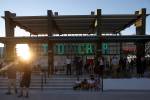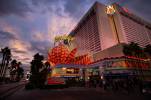Las Vegas’ Moulin Rouge’s remaining buildings face demise
There’s scant evidence of the property’s pivotal past: broken glass, wires, dirt and other debris sprayed across hallways.
Outside, a historic marker facing Bonanza Road details the Moulin Rouge’s history as Las Vegas’ first racially integrated hotel-casino, but cars zip by.
Years of vacancy, squatters and fires have left the buildings on the historic property in such ramshackle shape, the city of Las Vegas has deemed them a hazard and a nuisance. City officials plan to demolish them.
The 15-acre property is at a crossroads: People in the community who have pushed for years for a revival of the Moulin Rouge worry demolition will damage the property’s historic significance, and multiple investors are eyeing the site, hoping to do what many others have failed at over the years: revive or redevelop.
“That location is so historic for the Las Vegas community and the African-American community,” said UNLV Oral History Research Center Director Claytee White, a member of the city’s Historic Preservation Commission. “We want to make sure we don’t do something we regret. We don’t want the history of the Moulin Rouge to be forgotten.”
The Moulin Rouge opened in 1955, when the rest of Las Vegas casinos were segregated. Popular black entertainers could perform in shows on the Strip but couldn’t stay.
Luck ran out quickly for the original Moulin Rouge; it was open for only six months. But the Moulin Rouge hosted a meeting in 1960 that effectively ended segregation in Las Vegas casinos and resorts. The site’s significance earned it a spot on the National Register of Historic Places in 1992.
The building remained, and part of it is still there today, along with original red-tiled columns that lie on the open property, north of Bonanza Road.
Last month, the city’s Historic Preservation Commission voted to move ahead with a measure recommended by the city’s code enforcement division to demolish the remaining vacant structures on the site.
“They’re a danger,” Las Vegas Mayor Carolyn Goodman said. “We really can’t have that safety issue there.”
The commission directed the city to ensure the remaining original Moulin Rouge foundation and the remaining red columns are preserved. Another relic, the original Moulin Rouge sign, features prominently at the Neon Museum’s neon boneyard exhibit.
“We don’t have a lot of physical reminders of our history,” White said.
A shot at a new future
The Moulin Rouge remained after the original casino closed in 1955, but the decades since have been largely rocky for the place where big names such as Nat “King” Cole and Ella Fitzgerald once crooned. A fire gutted the Moulin Rouge in 2003.
The site had different uses over the years, but now it’s a series of empty, graffiti-tagged buildings, where homeless people sometimes seek shelter.
Multiple Moulin Rouge revival attempts over the years have failed, and the property has been in receivership for years.
A legal motion to approve the sale of the property is pending, and two other potential buyers have said they would outbid that sale, receiver Kevin Hanchett said.
The property has been at this point before, and recently. Moulin Rouge Holdings LLC held a May 2016 groundbreaking ceremony at the site, complete with detailed renderings for a full-scale revival of the Moulin Rouge. Two months later, Clark County District Judge Elizabeth Gonzalez blocked that sale, citing company infighting and a better offer.
The goal of receivership is to recoup as much as possible for the creditors, Hanchett said.
Roughly 300 investors are waiting to be repaid after a 2004 attempt to redevelop the site.
A range of ideas have been floated, but rebuilding a casino on the Bonanza Road site is a possibility because the unrestricted gaming license has been preserved, Hanchett said.
Former Nevada Assemblyman Harvey Munford, who has lived in the area for decades and plans to run for City Council in 2019, isn’t happy about the graffiti and destruction of the buildings.
“It’s dire that we get someone to have outright ownership of this property,” Munford said.
The city’s code enforcement division has seen issues with squatters there and is monitoring the site along with the Metropolitan Police Department, city spokesman Jace Radke said.
The city did an asbestos study of the buildings and will soon go out to bid for demolition work.
Las Vegas City Councilman Ricki Barlow hopes there will be some movement on the property in 30 to 60 days, but the city doesn’t have a precise estimate of when the buildings will come down.
Numerous homeless people have been living in the vacant buildings on the property, and multiple fires were set the week of July 4, increasing the urgency for demolition, Barlow said.
“My fear is they’re in there tearing those buildings up from the interior,” Barlow said.
Historic site
The push to revive and redevelop has lasted decades, dwarfing the time the original casino was open. But for those who experienced the Moulin Rouge, the enchantment lingers. Only at the Moulin Rouge could African-Americans experience Las Vegas’ thrills. There was a casino, bar, lounge, theater, swimming pool and dress shop. It catered to an interracial crowd and had an interracial workforce.
Photographs from 1955 show Moulin Rouge cancan dancers show frozen in time, their faces locked in a combination of amusement and concentration as they kick, their skirts rising above their hips. Headliners of the day including Sammy Davis Jr. and Louis Armstrong could sometimes be found there after hours, following their gigs on the Strip. The popularity boomed, drawing celebrities and politicians.
Goodman remembers going to the Moulin Rouge later, with her husband, former Mayor Oscar Goodman. The atmosphere was “electrifying,” she said.
The mayor wants to see redevelopment on the Bonanza Road site after it’s razed and a revival of the Moulin Rouge elsewhere in Las Vegas, she said.
Ward 5 Chamber of Commerce Founding President Katherine Duncan is “appalled” at the move toward demolishing the remaining structures on the site. She acknowledges some of the buildings are substandard and likely need to be removed but thinks others deserve a closer look.
“It seems to me they’ve taken an adversarial approach to a property that’s really emotional,” Duncan said. “What would it mean to preserve and protect those properties, if possible? A serious preservation effort, not just a demolition effort.”
Deverynn Bryant, who works with Duncan, wants to see the Moulin Rouge brought back, he told a Review-Journal videographer. He looks back on what the hotel-casino in its brief heyday must have meant to African-Americans living in Las Vegas in the 1950s and thinks they likely saw it as “a place where we can stay and play and be free.”
The State Historic Preservation Office, which manages historic sites in Nevada, doesn’t plan to intervene in the city’s demolition plans, State Historic Preservation Officer Rebecca Palmer said.
“In this particular case, it’s entirely a local decision,” Palmer said.
The city tore down some structures at the site in 2010, including the original tower. A historian with the National Park Service said at that time demolition could threaten the Moulin Rouge’s listing on the National Register of Historic Places.
White, the historic preservation commission member, said last week she needs to do more research to see if demolition jeopardizes the listing.
“I think they should talk to the people first and have a town hall meeting to discuss it, because there’s so much history here,” Munford said.
Duncan has several ideas for the future of the site, but the biggest win would be the Moulin Rouge restored as much as possible to its original condition, alongside an African-American cultural center. She also suggests a hospitality vocational training center.
Barlow could see residential or commercial development on the site that’s just outside downtown, or a blend of the two.
“On Bonanza, it’s ripe for economic development. The door is open,” Barlow said. “I’m not turning away from any development. Anything is better than what we have right now, which is people living in those buildings inappropriately.”
Contact Jamie Munks at jmunks@reviewjournal.com or 702-383-0340. Follow @JamieMunksRJ on Twitter.























